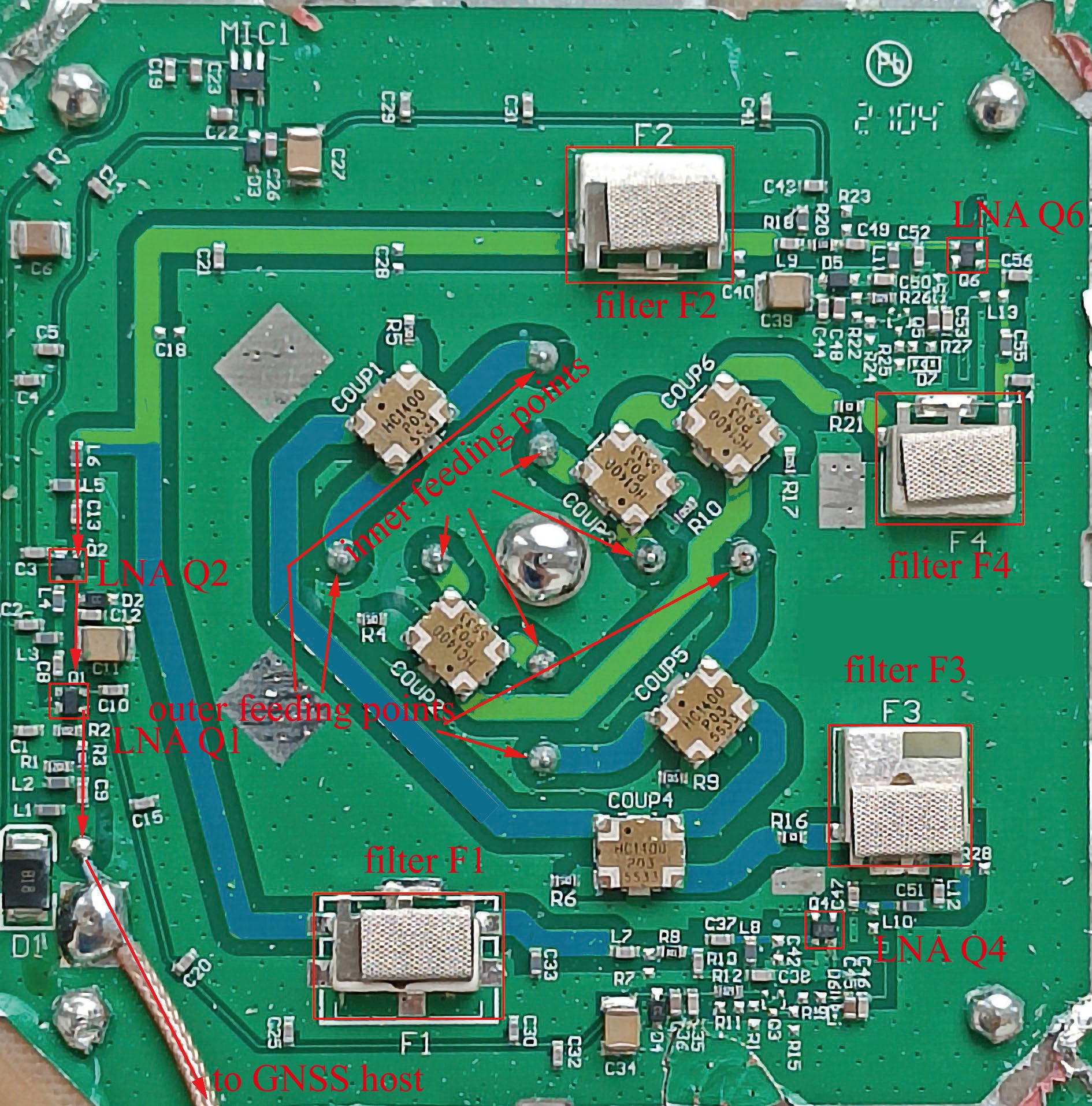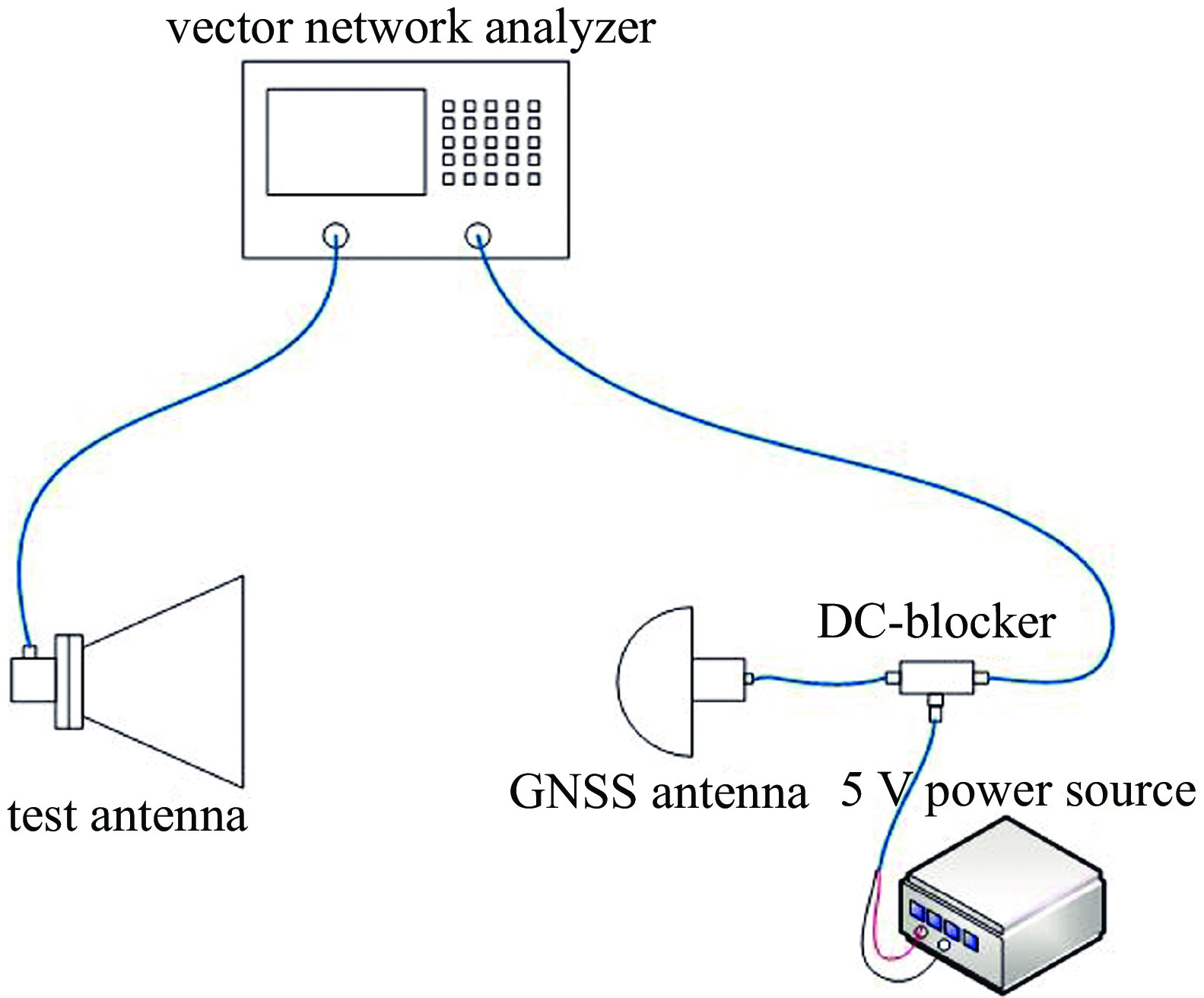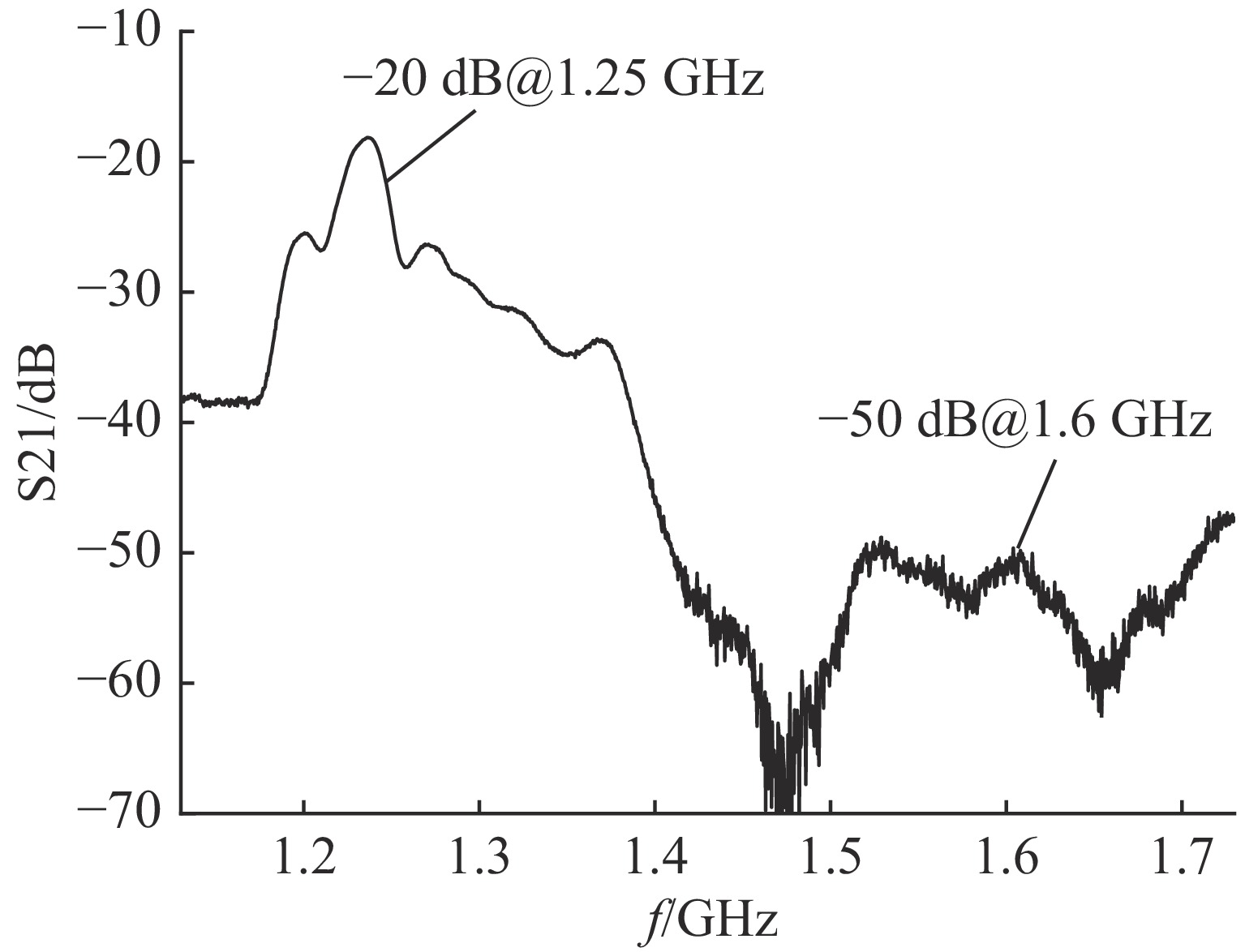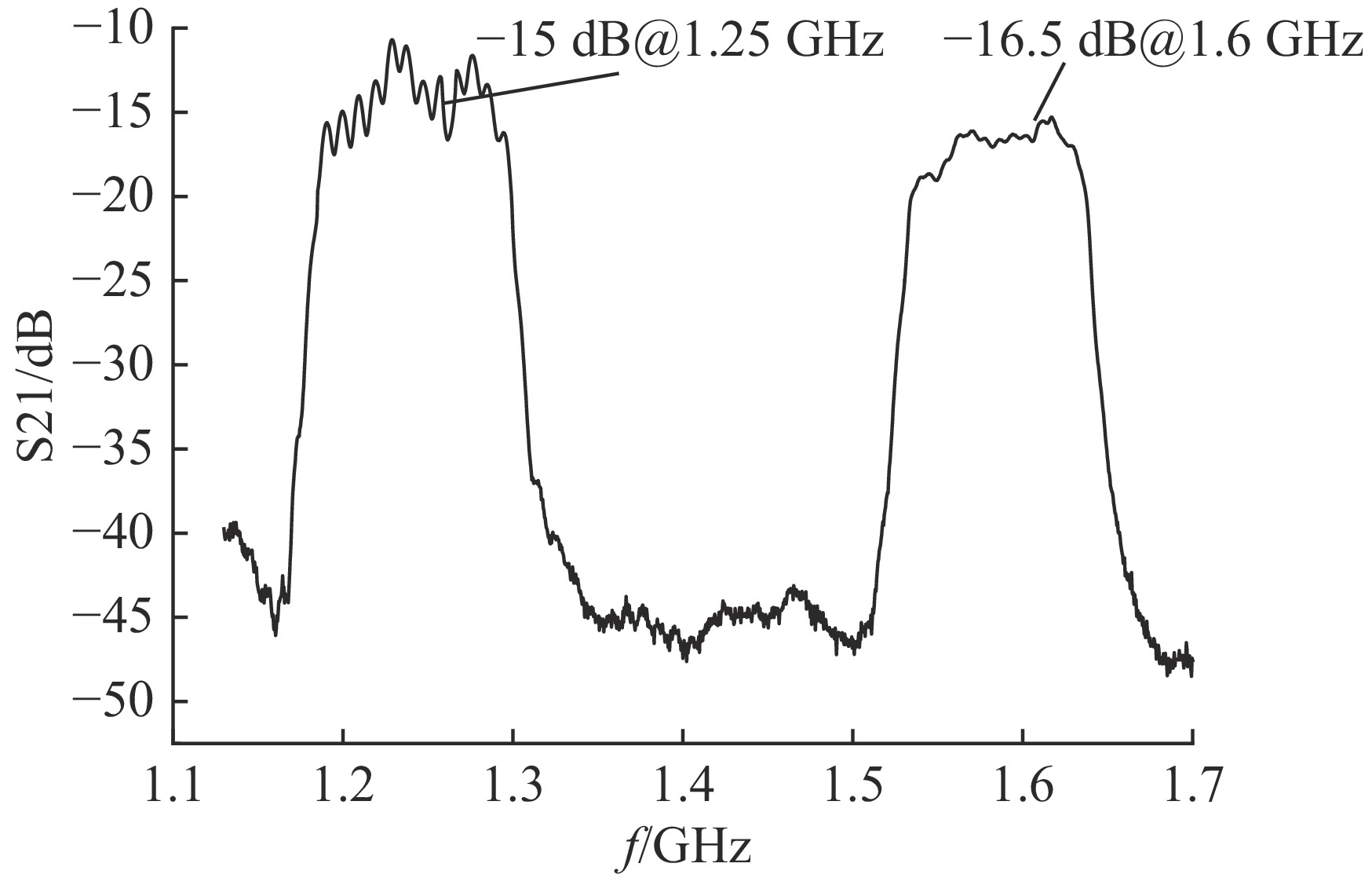High power microwave front door channel effect of GNSS-compatible receiver antennas
-
摘要: 通过辐照实验和热测方法研究了一型GNSS兼容接收机天线高功率微波(HPM)前门通道效应。辐照实验表明,在HPM频率1.6 GHz、脉宽50 ns、到靶功率密度约35 W/cm2条件下,实验的6个天线样本中有4个完全损伤、2个降级。对该型GNSS天线射频通道的分析和测试表明,其包含三级放大电路:第一级由两个滤波器和两个低噪放(LNA)分别形成中心频率约1.25 GHz和约1.6 GHz两条射频通道,其后信号合路进入共用的第二和第三级LNA。研究结果表明:HPM脉冲频率(1.6 GHz)所在射频通道的第一级LNA被HPM脉冲降级或损伤,是导致该型GNSS天线样本出现降级和损伤的原因;另一通道的第一级LNA及共用的第二、第三级LNA未受明显影响。原位更换受损的第一级LNA后,GNSS天线功能恢复正常,这说明该型GNSS天线前门效应与HPM频率具有较强相关性。Abstract:
Background Global Navigation Satellite System (GNSS) compatible receiver antennas—integrating multiple global navigation constellations—feature more complex front-door radio frequency (RF) channel architectures than single-constellation GPS antennas. High power microwave (HPM) effect research on GNSS compatible antennas with complex RF front-end were rarely seen.Purpose To investigate the GNSS compatible antenna HPM effects, radiation experiments on a type of GNSS-compatible receiver antenna were carried out, a customized characterization approach was designed to analyze the damaged antennas and identify the specific failed components within the complex RF front-end.Methods The RF front-end structure of the antenna was analyzed, revealing a design with two separate RF channels (around 1.25 GHz and 1.6 GHz), each with a dedicated first-stage low-noise amplifier (LNA), followed by shared second and third-stage LNAs. The performance of these components was characterized employing a customized “hot measurement” setup, which using a vector network analyzer incorporating a test antenna and a DC blocker.Results The measurements pinpointed the failure to the first-stage LNA (Q6) of the RF channel corresponding to the HPM source frequency of 1.6 GHz. This specific component showed significant degradation or complete failure. In contrast, the first-stage LNA (Q4) of the other channel (~1.25 GHz) and the shared subsequent amplifier stages (Q2 and Q1) remained unaffected. The root cause was confirmed by replacing the damaged Q6 LNA, which successfully restored the antenna’s full functionality.Conclusions This work demonstrates that in a multi-channel RF front-end, HPM effects can be highly localized, selectively damaging the first-stage amplifier of the channel cover the HPM frequency while sparing other sections. The findings provide valuable insights into the HPM vulnerability of complex RF systems and offer a reference methodology for related effect analysis.-
Key words:
- GNSS antenna /
- high power microwave /
- effect /
- front-door channel /
- low noise amplifier(LNA)
-
表 1 某GNSS天线支持的导航系统和频带
Table 1. The navigation systems and frequency bands supported by the GNSS antennas
GNSS system Band Bandwidth GPS L1 ( 1575.42 ±1.023) MHzL2 ( 1227.60 ±1.023) MHzGLONASS L1 ( 1602.5625 ±4.0) MHzL2 ( 1246.4375 ±4.0) MHzBDS B1 ( 1561.098 ±2.046) MHzB2 ( 1207.52 ±2.046) MHz -
[1] Hofmann-Wellenhof B, Lichtenegger H, Wasle E. GNSS – global navigation satellite systems: GPS, GLONASS, Galileo, and more[M]. Vienna: Springer, 2008. [2] 宁津生, 姚宜斌, 张小红. 全球导航卫星系统发展综述[J]. 导航定位学报, 2013, 1(1): 3-8Ning Jinsheng, Yao Yibin, Zhang Xiaohong. Review of the development of global satellite navigation system[J]. Journal of Navigation and Positioning, 2013, 1(1): 3-8 [3] Benford J, Swegle J A, Schamiloglu E. High power microwaves[M]. 3rd ed. Boca Raton: CRC Press, 2015. [4] Backstrom M G, Lovstrand K G. Susceptibility of electronic systems to high-power microwaves: summary of test experience[J]. IEEE Transactions on Electromagnetic Compatibility, 2004, 46(3): 396-403. doi: 10.1109/TEMC.2004.831814 [5] 方进勇, 等. 简明高功率微波技术[M]. 北京: 化学工业出版社, 2022: 339-341Fang Jinyong, et al. Concise high power microwave technology[M]. Beijing: Chemical Industry Press, 2022: 339-341 [6] 张存波, 王弘刚, 张建德. 高电子迁移率晶体管微波损伤仿真与实验研究[J]. 强激光与粒子束, 2014, 26: 063014 doi: 10.3788/HPLPB20142606.63014Zhang Cunbo, Wang Honggang, Zhang Jiande. Simulation and experiment research on high electron mobility transistor microwave damage[J]. High Power Laser and Particle Beams, 2014, 26: 063014 doi: 10.3788/HPLPB20142606.63014 [7] 柴常春, 张冰, 任兴荣, 等. 集成Si基低噪声放大器的注入损伤研究[J]. 西安电子科技大学学报, 2010, 37(5): 898-903Chai Changchun, Zhang Bing, Ren Xingrong, et al. Injection damage of the integrated silicon low-noise amplifier[J]. Journal of Xidian University, 2010, 37(5): 898-903 [8] 马振洋, 柴常春, 任兴荣, 等. 双极晶体管微波损伤效应与机理[J]. 物理学报, 2012, 61: 078501 doi: 10.7498/aps.61.078501Ma Zhenyang, Chai Changchun, Ren Xingrong, et al. The damage effect and mechanism of the bipolar transistor caused by microwaves[J]. Acta Physica Sinica, 2012, 61: 078501 doi: 10.7498/aps.61.078501 [9] Ratna P, Jain S, Chattopadhyay J. Mitigation technique for high altitude electro magnetic pulse (HEMP) for GPS receiver[C]//Proceedings of 2014 Asia-Pacific Microwave Conference. 2014: 1175-1177. [10] 韩曹政, 王武斌, 赵伟, 等. 北斗/GPS导航系统抗高功率微波防护设计[J]. 强激光与粒子束, 2024, 36: 123001Han Caozheng, Wang Wubin, Zhao Wei, et al. Protection design of BDS/GPS to resist high power microwave[J]. High Power Laser and Particle Beams, 2024, 36: 123001 [11] 赵铜城, 余道杰, 周东方, 等. 无人机GPS接收机超宽谱电磁脉冲效应与试验分析[J]. 强激光与粒子束, 2019, 31: 023001Zhao Tongcheng, Yu Daojie, Zhou Dongfang, et al. Ultra-wide spectrum electromagnetic pulse effect and experimental analysis of UAV GPS receiver[J]. High Power Laser and Particle Beams, 2019, 31: 023001 [12] 范宇清, 程二威, 魏明, 等. 高功率微波弹对GNSS接收机毁伤效果分析[J]. 系统工程与电子技术, 2020, 42(1): 37-44Fan Yuqing, Cheng Erwei, Wei Ming, et al. Analysis of damage effect of high-power microwave bomb on GNSS receiver[J]. Systems Engineering and Electronics, 2020, 42(1): 37-44 [13] 王建争, 彭少磊. 高功率微波对北斗系统接收机影响分析[J]. 舰船电子工程, 2019, 39(10): 27-29Wang Jianzheng, Peng Shaolei. Effect of high power microwave on Beidou system receiver[J]. Ship Electronic Engineering, 2019, 39(10): 27-29 [14] 陈金宝. 定向能技术与应用[M]. 长沙: 国防科技大学出版社, 2023: 193Chen Jinbao. Directed energy technologies and applications[M]. Changsha: National University of Defense Technology Press, 2023: 193 -




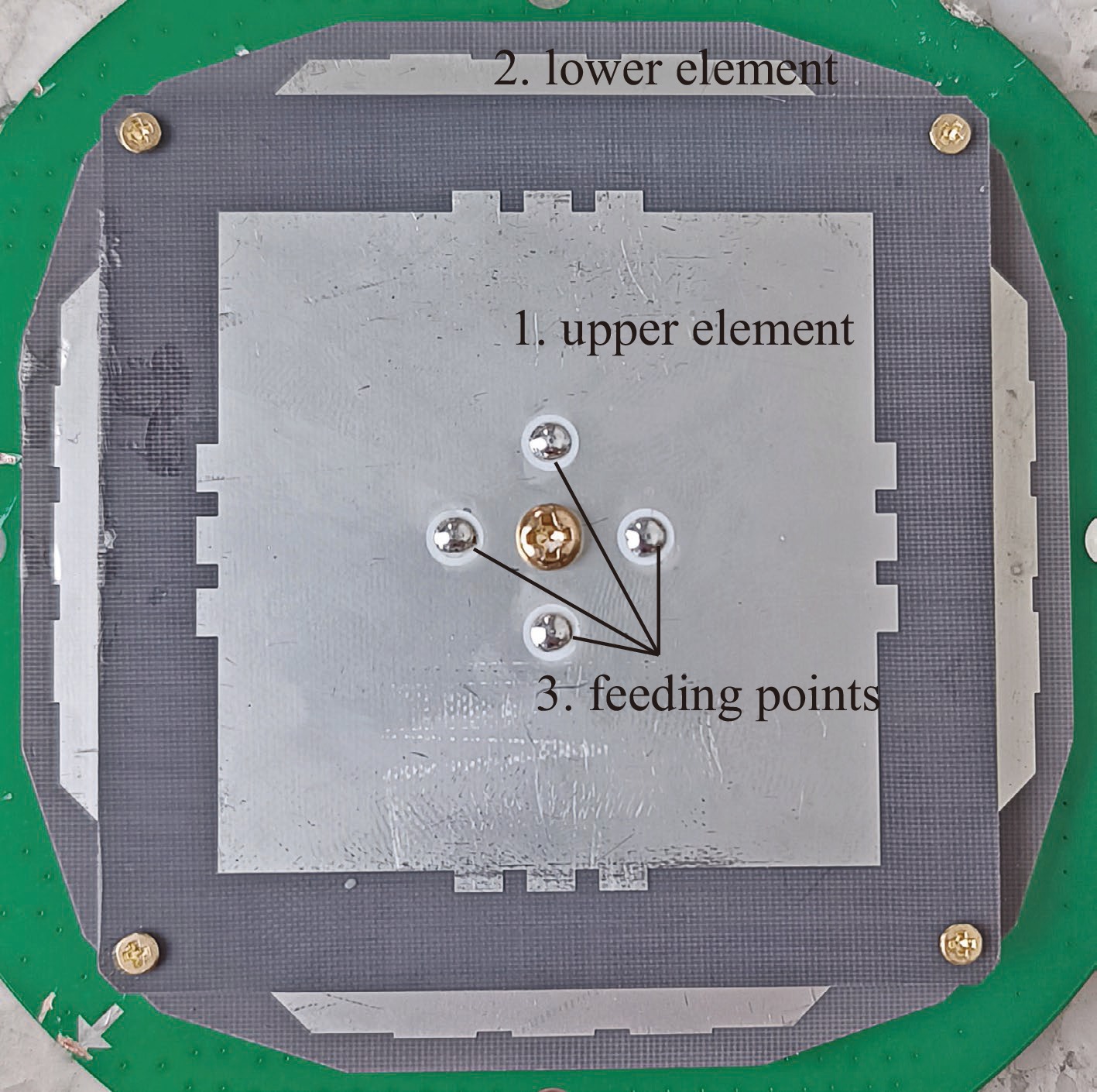
 下载:
下载:

